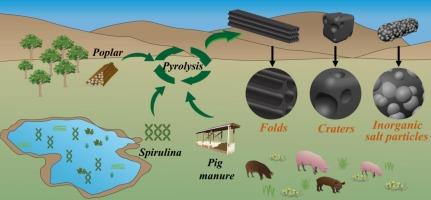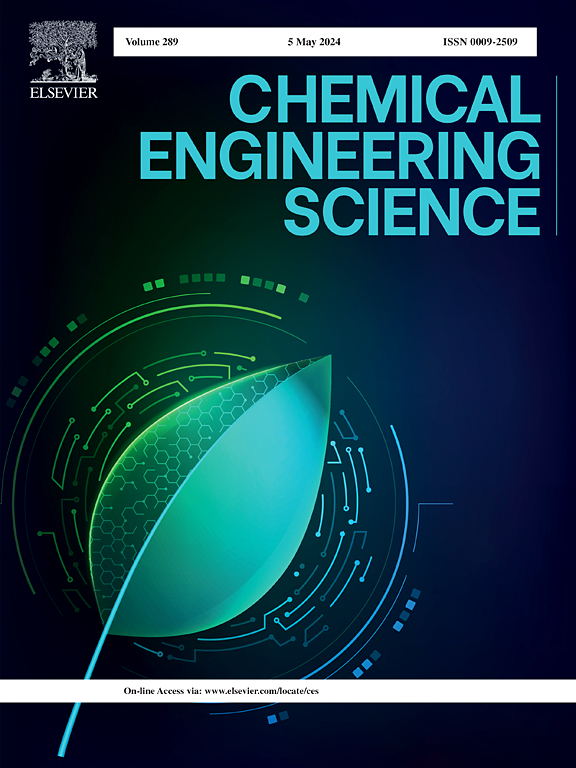Differences in organic and inorganic components of poplar, spirulina and pig manure form biochar of very distinct properties
IF 4.1
2区 工程技术
Q2 ENGINEERING, CHEMICAL
引用次数: 0
Abstract
Poplar, spirulina and pig manure are representatives of woody biomass, algae, and biowastes in poultry breeding. They are all carbonaceous, but their distinct composition in both organic and inorganic fractions could impact properties/compositions of pyrolytic products. The detailed impacts were investigated herein by conducting pyrolysis of poplar, spirulina and pig manure at 500 °C and systematic analysis of resulting products. The results showed that bio-oil yield from poplar or spirulina was roughly 2 times of that from pig manure, due to their abundant organic components. However, the yield of biochar from poplar or spirulina was less than half of that from pig manure, but, on organic basis (excluding ash in biochar), the biochar yield was the highest from pyrolysis of poplar. Abundant inorganic components in pig manure formed ash-rich biochar (73.2 %), which was much higher than the ash content in spirulina-biochar (23.9 %) or poplar-biochar (9.0 %). This led to remarkably lower heating value (5.3 versus 26.3 MJ/kg for poplar-biochar) and much lower overall combustion index. Additionally, more intensive cracking induced by low thermal stability of organics in spirulina and pig manure, together with their abundant inorganics (i.e. SiO2, CaCO3 and KCl), resulted in remarkably lower carbon yields than that from pyrolysis of poplar. This, however, reduced the activation energy in pyrolysis of spirulina. Biological fibrous structures of poplar could be inherited by poplar-biochar, while morphology of pig manure-char was very irregular. Melting/agglomeration of proteins and lipids in spirulina formed spirulina-biochar of densified structures with smooth surface.


求助全文
约1分钟内获得全文
求助全文
来源期刊

Chemical Engineering Science
工程技术-工程:化工
CiteScore
7.50
自引率
8.50%
发文量
1025
审稿时长
50 days
期刊介绍:
Chemical engineering enables the transformation of natural resources and energy into useful products for society. It draws on and applies natural sciences, mathematics and economics, and has developed fundamental engineering science that underpins the discipline.
Chemical Engineering Science (CES) has been publishing papers on the fundamentals of chemical engineering since 1951. CES is the platform where the most significant advances in the discipline have ever since been published. Chemical Engineering Science has accompanied and sustained chemical engineering through its development into the vibrant and broad scientific discipline it is today.
 求助内容:
求助内容: 应助结果提醒方式:
应助结果提醒方式:


